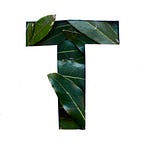“But how do you get your protein?”
Just to clear things up, Vegetables have MORE than enough protein. And it’s complete, whole, and “high quality” protein. The assumption that vegetarians and vegans don’t get enough protein or that they need to combine certain foods to get enough of the “right” protein is completely false. This myth can be traced back most recently to a book called Diet for a Small Planet by Frances Moore-Lappé, who wanted to promote a diet void of meat. Anxious that people would be worried about protein, she tried to reassure them that they could get enough protein if they combined certain foods that had different amino acids in them. 10 years later, however, Lappé came out and admitted that she was wrong. She said, “If people are getting enough calories, they are virtually certain of getting enough protein” She owned up to her mistake and admitted that you can easily get enough protein from plants (1).
The Science
So now that we’ve established that not getting enough protein without animal products is a myth, let’s have a simple science lesson. What is protein, how do our bodies use it, and where can it be found? Let’s get the basics. Protein is a macronutrient made up of long chains of different amino acids. It helps our body tissues to regenerate and grow (2). When we eat food, the protein in that food goes to our liver where it is broken down. The amino acids in the protein are then synthesized to build new body tissue. Protein can be found in almost every type of food, and is usually in a higher concentration in animal products. Each type of food has different amounts of each amino acid, but here’s the clincher: almost all types of plant foods have all 9 amino acids that we need in our diets. Even iceberg lettuce!
Daily Recommendations
According to the U.S. dietary guidelines, we only need about 3–11% of our daily calories to come from protein sources (3). It really depends on our body type, and our activity level. A really active, large man for instance, might benefit from 10 or 11% protein, while a small child could get by just fine with only 3%. So that being said, do we need to worry about getting enough protein from a plant based diet? No! Vegetables, on average are about 22% protein! Grains have about 13% (4). Check out this cool chart:
Here is another one:
So there it is, you can get more than enough of the right protein from plant sources.
Protein is Dangerous, Sometimes
Too much of the wrong protein can actually be dangerous. Animal proteins come with a whole slew of negative side effects. Animal foods contain tons of toxins and chemicals, artery-clogging cholesterol, and the protein in animal foods makes a perfect environment for cancer to grow in. In perhaps one of the largest nutritional studies ever conducted called, “The China Study”, researchers found that they could drip vegetarian blood on cancer cells and the cancer cells would shrink. When they dripped meat-eater blood on the same cancer cells, the cells grew. Basically, it has to do with a hormone called IGF-1 that is found in our bodies. The amount of animal foods that we consume greatly increases or decreases the amount of IGF-1 in our bodies, and this can lead to the unwanted growth of cancer cells (7). If you want to know more of the sciency stuff, go read The China Study.
Hey America, what about fiber?
I’ll close with this interesting tidbit. Only about 3% of Americans don’t get enough protein (8). These are people that are basically just not eating enough food. So clearly, protein deficiency is not a big deal in the United States. But do you know what is a thing? Only 3% of Americans get the recommended amount of daily fiber (9)! Isn’t that ironic? I think so.
Sources:
Diet for a Small Planet
Google dictionary — Protein
Dietary Reference Intakes for Energy, Carbohydrate, Fiber, Fat, Fatty Acids, Cholesterol, Protein, and Amino Acids, Food and Drug Administration, Institute of Medicine of the National Academies, 2005
USDA National Nutrient Database for Standard Reference
USDA Food and Nutrient Database
USDA Food and Nutrient Database
The China Study, T. Colin Campbell
https://www.ncbi.nlm.nih.gov/pubmed/18469286
…..
If you want more inspiration, good recipes, and other tips on eating a plant based diet, check out our instagram and facebook pages.
